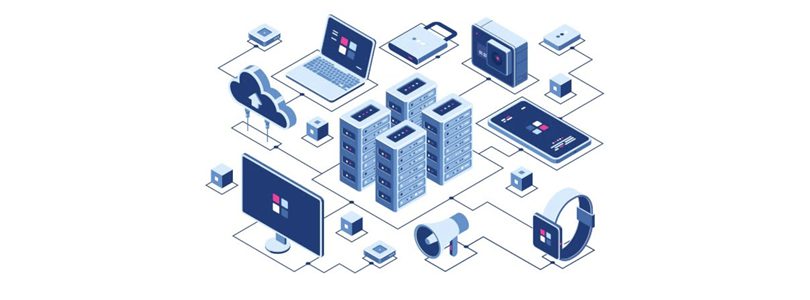Over the last years, at ITUSA Services we have identified a high need among many companies currently committed to digital transformation who are still using On Premise local infrastructure, sometimes overlooking the benefits, advantages, and strengths of a Cloud infrastructure.
If you are considering migrating to a cloud infrastructure, we recommend starting with a thorough evaluation and planning.
First, we perform a detailed analysis of your current infrastructure: we conduct a complete inventory of resources and applications, and assess the dependencies among applications, databases, services, and hardware. Then, we clarify the migration goals, such as scalability, cost reduction, and performance improvement, and define the technical and security requirements that the new architecture must meet. Finally, we evaluate cloud providers like AWS, Azure, and Google Cloud, comparing costs, services, and support, to choose the one that best fits your needs.
Next, we move on to the design of the cloud architecture. We break down monolithic applications into independent microservices so that they can be scaled individually and use containers to package and deploy applications consistently. We opt for managed cloud databases, such as Amazon RDS and Google Cloud SQL, and employ scalable storage for unstructured data. To ensure network and security, we set up secure virtual networks and apply measures such as firewalls, data encryption, and identity and access management (IAM).
Then, we develop a migration plan. We establish a migration strategy, which can be gradual, starting with less critical components to minimize risks, or complete in one step if the risks are manageable. We create a detailed timeline with key milestones and deadlines for each phase of the migration, and develop a testing plan that includes unit and integration tests to ensure that the services function correctly in the cloud, as well as evaluating the performance of the applications in the new infrastructure.
Later, in the implementation and migration stage, we set up the necessary environments in the cloud, including networks, databases, and storage services, and apply the necessary security policies and settings. We use data transfer tools, such as AWS DataSync and Google Cloud Transfer Service, to move data from local databases to the cloud, ensuring that the data is synchronized between the old and new environments. We implement the applications in containers and deploy them in the cloud, adjusting the settings to optimize performance and ensure compatibility.
In the validation and optimization phase, we perform final tests to confirm that all applications and services function correctly, and conduct security audits to protect data and applications. We optimize configurations and resources to improve performance and reduce costs, and implement monitoring tools such as CloudWatch and Stackdriver to monitor performance and continuously detect problems.
Finally, in training and support, we provide training to the IT team on the new infrastructure and cloud management tools, and maintain detailed documentation on the new architecture and procedures. We establish a continuous support plan to solve problems and perform regular maintenance, and plan continuous updates and improvements to keep the infrastructure efficient and secure. With this approach, at IT USA Services we help you migrate to the cloud effectively, ensuring that your company fully leverages the advantages of a modern and scalable infrastructure.
